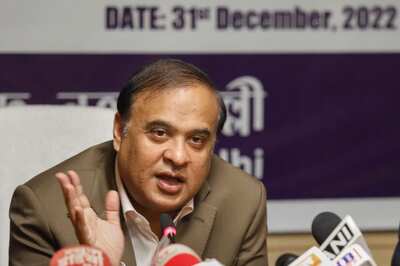
views
Amit Sabharwal wants to get his financial goals in place. He has made quite a few investments for various needs of his life but is now confused in how to go about planning his retirement. Our expert solves his dilemma.
Q. I am 33 years old and my spouse is 32. We have a daughter of two years and have no plans of having another child. Both of us are salaried professionals, our combined income sums up to Rs 9 lakh per annum. We have been investing in four mutual funds through systematic investment planning (SIP) of Rs 1,000 each and want to continue for the next 10 years. Apart from this, we have the following investments:
Should I buy Jeevan Nidhi for Rs 5 lakh as sum assured for my retirement planning? Can you also suggest what makes a better investment—physical gold or gold exchange traded fund (ETF).
Shankar's reply:
A good beginning: It is good that you have started investing early in life. Beginning early and saving more is very important. Take time to assess your financial goals and then align them with your portfolio. SIP is a great way to invest in stock markets. They automatically average cost and help you accumulate wealth.
A.Asset allocation review Your total equity investing is very low as the funds and ULIP put together are only 14 per cent of your present portfolio value while traditional insurance plans and KVP bonds account for 86 per cent.
Road ahead: Assuming a 12-15 per cent return, your SIPs would be worth about Rs 8.8 – 10 lakh at end of ten years. I recommend you to continue the SIPs as long as possible since they can help you average the cost and build retirement corpus nest.
Since you are young and have a long career ahead it would be ideal to invest more in equity funds via SIP. Since your joint income is Rs 9 lakh per annum i.e. Rs 75, 000 a month. You can increase your SIPs by another Rs 4,000-5,000. You can have a total monthly investment of Rs 10,000 for the next 28 years till you turn 60. It would fetch approximately Rs 2.4 crore with an assumption of 12 per cent returns per annum on a compounded basis. This will take care of your retirement.
You can plan your Rs 10,000 SIP for 28 years in the following way:
First ten years
Balanced Funds
Next fifteen years
Debt Funds
Last three years
PAGE_BREAK
B. Insurance review
As a percentage of your income, ULIPs are meager investments. So, it will not make a significant impact to your portfolio.
Jeevan Saathi is a joint life insurance policy. We assume that you are investing Rs 1 lakh per annum in it.
Road ahead: You can continue the policy for insurance cover since both of you are working. Please refer to this tool to know approximately how much insurance cover you need.
Komal Jeevan is a children's insurance plan. But you have not indicated whether you are paying regular annual premiums or it is a single premium plan.
Road ahead: It is better to continue if you are paying regularly. If it is single premium, then it's advisable to start an SIP for Rs 8,500 per month in your child's name. This would be helpful for her future education and marriage expense.
An investment of Rs 8,500 per month in an SIP separately for your child can fetch about Rs 33 lakh in 15 years. Even with 10 percent returns you can invest in two equity funds. This money would help your daughter in education and you may set aside the rest for her marriage too.
C. Retirement planning review
It is better to invest in the government's new pension scheme (NPS) for your retirement needs rather than insurance plans like Jeevan Nidhi. NPS offers lowest cost investment vehicle with ease of operation.
Please have a look at the PFRDA website and select a pension product suitable to your needs.
The scheme seems to have a great future though withdrawals are taxable. However, it is only a question of time before it is solved.
You can choose a fund manager of your choice among the six appointed by the PFRDA and the amount you want to invest in it. Another option for pension investment is Templeton India Pension Plan which is a balanced fund that helps you plan for long-term investments.
D. Gold as an investment
Indians always like investments in gold. Gold ETF are by far the best option as you can easily buy the same through your broker. You can avoid paying wealth tax since gold ETFs are mutual funds. Storing it also convenient as you don't have to rent a bank locker or worry about theft. Additionally, high liquidity is available in Gold ETFs. So, you can buy and sell any time during a trading session too. Spread your purchase over a time-period by buying couple of units. In gold ETFs 1 unit is equal to 1 gram of gold. So, you can purchase 1 gram every month.
Another option is gold equity funds like DSP Black Rock World Gold Fund. It is a foreign fund that invests in gold mining shares across the world. Some of the risks involved in this are fluctuations in gold price, volatility of the shares of the underlying company, exchange rate risk (since your rupee investment is converted to dollars to buy this fund). Hence, begin investing in small amounts till you understand the fund it completely.
Lastly, continuous learning, saving and investing for long-term are essential to reap good returns. Wish you good luck in your investments.
Disclaimer: While we have made efforts to ensure the accuracy of our content (consisting of articles and information), neither this website nor the author shall be held responsible for any losses/ incidents suffered by people accessing, using or is supplied with the content.




















Comments
0 comment